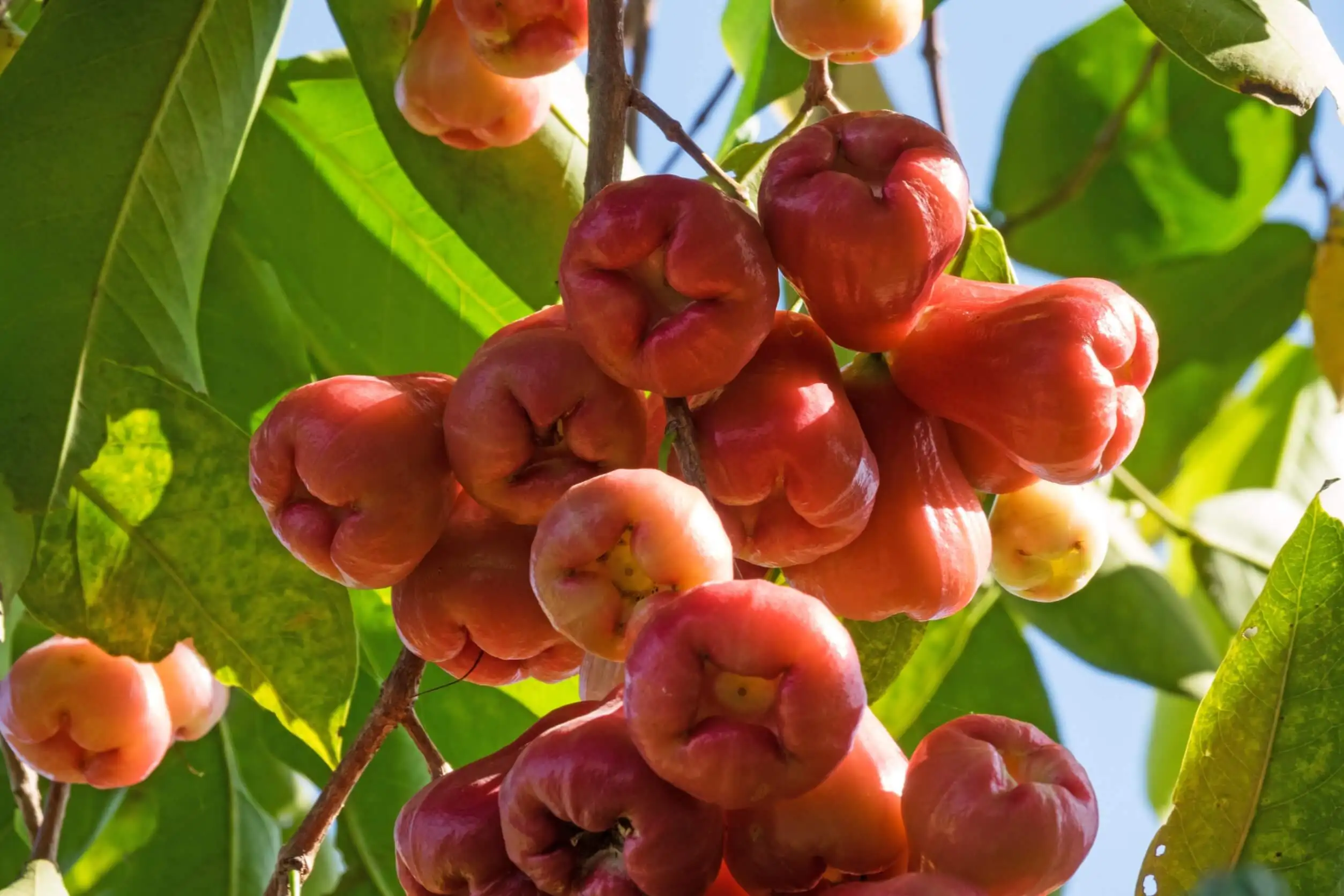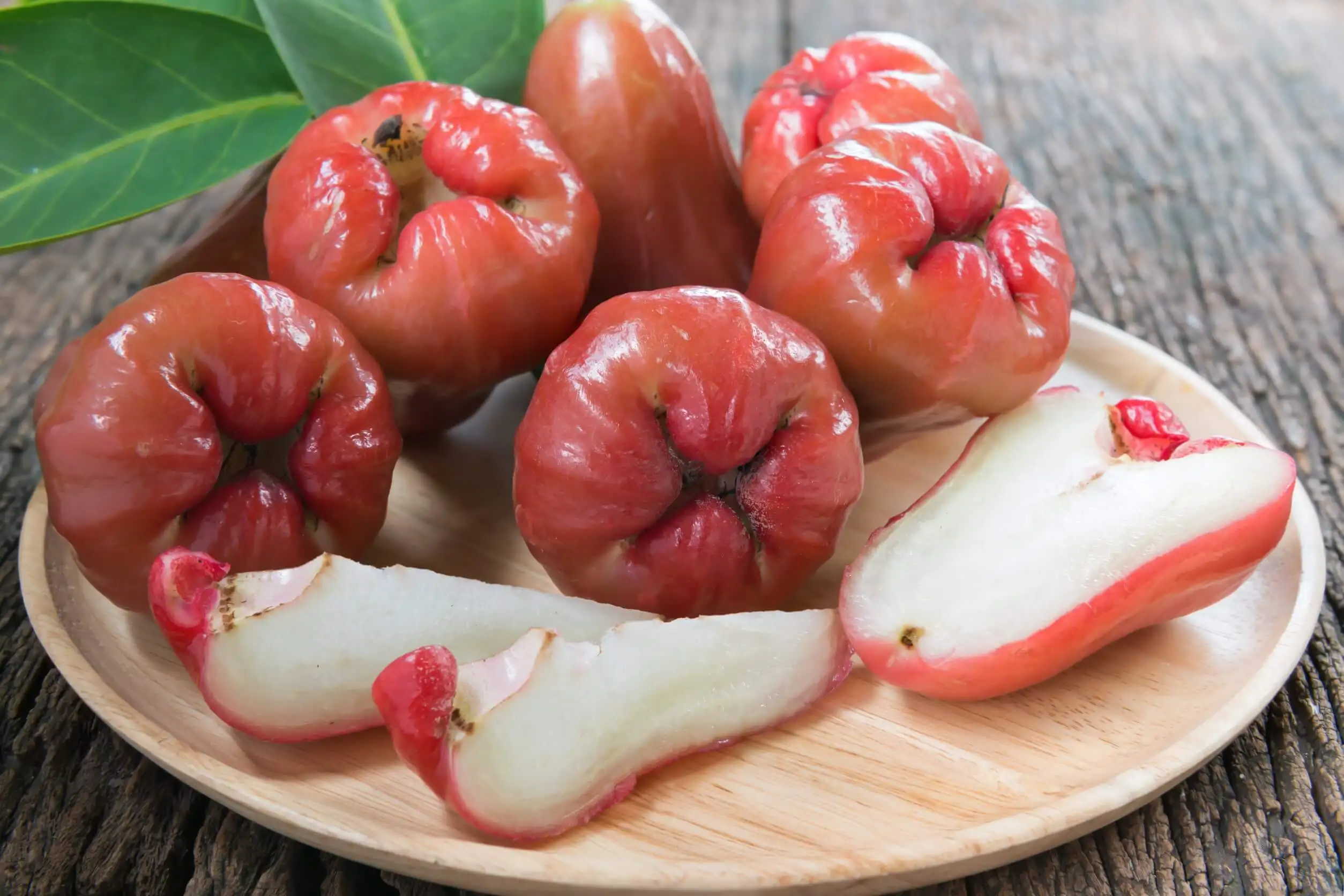The Rose Apple: Characteristics, Properties and Benefits


Written and verified by the nutritionist Saúl Sánchez Arias
The so-called “rose apple” is also known in some countries as the pomarrosa, and its more scientific name is Syzygium jambos. It has different uses, and even certain medicinal properties due to its excellent nutritional value. From the point of view of its organoleptic characteristics, it stands out above all for its rose smell. The pulp, on the other hand, is white and spongy.
Before we begin, we must point out that the presence of fruits in the diet on a regular basis is recommended for our health. These foods provide an important amount of micronutrients and phytochemicals with antioxidant capacity, which help in the prevention of chronic and complex pathologies. In this way, we ensure that the physiology of our bodies is working correctly.
Benefits of the rose apple

First of all, the rose apple contains iron, calcium, and vitamin B3. In particular, calcium intake is essential in order to improve bone mineral density and thus prevent osteoporosis processes. These are more frequent in women than in men, once the menopause is over.
At the same time, it will be crucial to maintain vitamin D levels in optimal ranges to enhance the absorption of the mineral, according to a study published in Frontiers of Hormone Research.
Iron, meanwhile, is key to improving the movement of oxygen through the blood. An insufficient supply of this mineral could lead to anemia, which causes chronic tiredness and fatigue. Research published in the journal Best Practice & Research demonstrates this. In this sense, it’s advisable to ensure its consumption together with a dose of vitamin C to enhance the subsequent absorption.
Also, the fiber content of the pomegranate is crucial for the human body. There’s evidence that this substance can improve the health and functioning of the digestive tract.
On the one hand, it increases the volume of the fecal bolus, thus causing a greater stimulation of the mechanoreceptors of the tract. As if this weren’t enough, it serves as an energetic substrate for the microbiota, promoting the growth of bacteria and improving their performance.
Here’s another exotic fruit for you: Discover the Properties of the Exotic Pink Dragon Fruit
Nutritional value

Regarding its nutritional value, every 100 grams (4 oz) of the fruit gives about 25 calories. This low caloric value means it can be included without any problem in a low-calorie diet for weight loss. In addition, it will be quite satiating due to its water content, which can help reduce the sensation of appetite and prevent food cravings.
As far as micronutrients are concerned, carbohydrates are the predominant ones. Every 100 grams (4 oz) of the product contains almost 8 grams of sugar. Proteins and fats, however, don’t even account for 1 gram overall. In addition, the few proteins it contains are of low biological value, so there are deficiencies in essential amino acids.
However, the rose apple provides calcium and iron, and also a significant dose of vitamin A and vitamin C. Both nutrients act together to stimulate the endogenous synthesis of collagen, the most abundant protein in the human body. At the same time, vitamin C itself is crucial for an optimal immune response, which will reduce the risk of infectious pathologies.
You may also be interested in: 4 Exotic Fruits and Vegetables You’ve Probably Never Heard Of
Medicinal properties
Many different medicinal properties have been attributed to the rose apple, although most of them don’t have sufficient evidence. For example, the root is often used to improve the symptoms of epilepsy. Even the powder that’s produced by crushing it can help to combat diabetes.
The bark of the plant has been introduced into some people’s diets to eliminate and control vomiting, and it has purgative characteristics. However, if you develop any of the pathologies mentioned above, it’s best to go to see a medical specialist to obtain treatment with scientific, clearly demonstrated benefits.
Rose apple, a good quality exotic fruit
As you have seen, the rose apple contains a good amount of the essential micronutrients that will ensure the proper functioning of the human body.
This fruit can be included regularly in the diet in order to obtain benefits and to improve the supply of minerals and fiber. Both elements are essential for the physiological processes that take place in the internal environment to develop efficiently.
Before concluding, we must emphasize that at least 5 servings of fruit and vegetables should be included in the daily diet. In this way, we achieve sufficient consumption of substances with antioxidant capacity, which will, in turn, help to prevent the development of chronic and complex pathologies.
All cited sources were thoroughly reviewed by our team to ensure their quality, reliability, currency, and validity. The bibliography of this article was considered reliable and of academic or scientific accuracy.
- Goltzman D, Mannstadt M, Marcocci C. Physiology of the Calcium-Parathyroid Hormone-Vitamin D Axis. Front Horm Res. 2018;50:1-13. doi:10.1159/000486060
- Percy L, Mansour D, Fraser I. Iron deficiency and iron deficiency anaemia in women. Best Pract Res Clin Obstet Gynaecol. 2017;40:55-67. doi:10.1016/j.bpobgyn.2016.09.007
- Gill SK, Rossi M, Bajka B, Whelan K. Dietary fibre in gastrointestinal health and disease. Nat Rev Gastroenterol Hepatol. 2021;18(2):101-116. doi:10.1038/s41575-020-00375-4
This text is provided for informational purposes only and does not replace consultation with a professional. If in doubt, consult your specialist.








